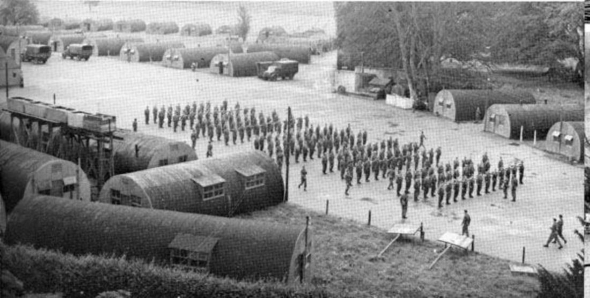Commando Training WW2
There may be content on individuals that is not listed here. If you do not find a name use the different Search options within the Site. Contact the Archive to have a name included.
Displaying 1 - 255 of 255A timeline of Commando Training
The first call for volunteers for ‘Service of a hazardous nature’ was in the early months of 1940 and for the new Independent Companies. Many of these men went onto action in Norway almost immediately with little training. On their return Winston Churchill wanted his own Corps of ‘shock troops’ to start afresh. Lt Col Dudley Clarke, who was then Military Assistant to the Chiefs of the Imperial General Staff, is generally credited with the initial outline plan of their formation. His plan was approved and the name agreed on. Thus the ‘Commandos’ were formed.
'A document on the object of Special Service'
'Achnacarry Christmas 1945'
'Boat Training at Bunarkaig'
The Commando Boat Station at Achnacarry was on Loch Lochy at Bunarkaig. A small fleet of various craft was assembled for training in basic seamanship and landing drills. Amongst this armada were whalers, cuters, landing craft, dorries, canoes, rubber dinghies, kapok bridge rafts, and collapsible Goatleys. They were all stored in or moored alongside a little stone boathouse. Instruction began with a short film on the role and functions of Combined Operations, and the various craft used for training and operations.
'C.M.W.T.C History 1943-45'
This document has a brief history of the Commando Mountain Warfare Training Centre (C.M.W.T.C) with a nominal roll from 1943 to 1945. It was prepared for a C.M.W.T.C. commemoration dinner on 30 November 1945. If the document does not load immediately in the viewer, refresh this page, or download from above.
'Cliff Assaults' Combined Ops Pamphlet 24
'Commando Basic Training Centre'
Location
'Commando Dark Mile training areas'
A good map of the various locations of training described on our archive.
'Commando Mountain Warfare Training Centre' (CMWTC)
Initially formed at Braemar in Scotland in December 1942 and called the Commmando Snow and Mountain Warfare Training Centre. The Commanding Officer was Squadron Leader Frank Smythe, an accomplished mountaineer. Its role was to train Commandos to fight in high snow covered mountain territory. After 6 months the unit moved to North Wales and assumed a different role including the training of Lovat Scouts as a Mountaineer Battalion.
'Commandos in the Field 1945' - Combined Ops. Pamphlet 26
Prepared under the direction of the Chief of Combined Operations, March 1945.
'Courses at CTC Inveraray'
Courses for the Special Service Brigade and SCU.
Location
'History and Training 1940 -1945'
Introduction
'History and Training 1946 - present'
The following pages will tell you a little about current Commando training for the Royal Marines, and the All Arms Commando Course for the other Services of today, but first read about the changes the Commandos went through post war.
'Lt. Col. Vaughan confers with his 2 i/c, Major Cockcraft', image
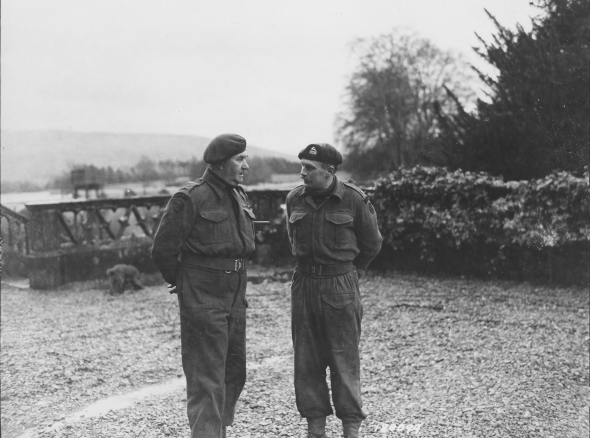
[Caption] "Lt. Col. C.E. Vaughan, Commandant of a Commando Depot confers with this Second in Command, Major Peter Cockraft* on the day's schedule for a Ranger Unit. Speanbridge, Scotland."
'Middle East Depot Commando Training and Holding Unit'
'Post war Commando School RM'
After the war ended and Achnacarry closed, those Royal Marines selected for specialised Commando training attended the Commando School initially located at Towyn in Wales, then relocated in 1947 to Bickleigh in Plymouth. In 1954 it was moved to the ITC Lympstone.
'View of Commando training in 1973'
A newspaper article by Capt. Donald Gilchrist
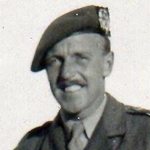
This article on WW2 Commando training written by Captain Donald Gilchrist, No.4 Commando and CBTC Instructor, was published in the Oban Times and Argyllshire Advertiser 8 November 1990.
A reunion of the CMWTC at St Ives
This is an account of a Commando Mountain Warfare Training Centre reunion held at St Ives on the 24-26th September 1993 as outlined in Commando Association Newsletter 98 of March 1994.
ABBOTT, J.
Source: Commando Association newsletter 13
ALDRIDGE, F.
Post war member of the original Commando Association with whom they lost contact. Last known address: Greenford, Middx. [Source: CA Lost Legion 1].
AMOS, C.J.
[Source: Commando Association Lost Legions List 1].
ANDERSON, C.
ANDERSON, Walter, E.
ASHLEY, Pierce
ASPDEN, James
AUSTEN, Alexander Fred
AUSTIN, Norman, B.
BAIRD, Alexander Fleming
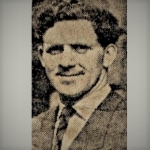
Obituary*
BAKER, C.R.
[Source: Commando Association Lost Legions List 1].
BALCHIN, John
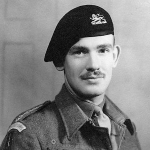
BALL, Leighton Thomas
BARNES, C.
Sources
BARNES, Robert
BARRINGTON, Derek, A.
BARRITT, Victor Clarence
BASHAM, R.V.
BATES, C.
BAXTER, Richard Fraser
BEALE, H.
[Source: Commando Association Lost Legions List 1].
BEATON, J.W.
BEATTY, Brian, H.
BEAUMONT, James
Sources
Commando Association newsletter 73.
Commando Association Lost Legions List 1.
BEEVERS, F.
Post war member of the Commando Association last known residing Kelso.
Sources
Commando Association Lost Legion List 2.
BELL, B.A.
Post war member of the Commando Association last known residing Ellesmere Port, Cheshire.
Sources
Commando Association Lost Legion List 4.
BELLOTTI, P.A.
[Source: Commando Association Lost Legions List 2].
BELLRINGER, Roy
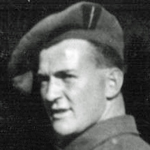
BERRISFORD, Peter John
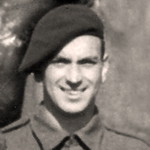
BILLETT, A.D.
[Source: Commando Association Lost Legions List 2].
BISSELL, Stan, (CBTC), transcript of a speech.
Stanley Bissell joined the Metropolitan Police on the 1st March 1926. In 1930 & 1934 he won silver medal at the British Empire Games middleweight freestyle wrestling events in Canada and London. He was then posted as self defence instructor at the Metropolitan Police Training Centre at Peel House. He attended the Army School of Physical Training to assist him in this new Police role.
BISSELL, Stanley
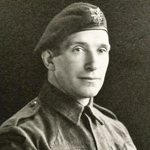
BLEAKLEY, Charles
BLINT, Woolf
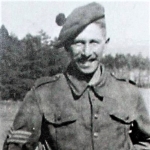
BONE, Ian Anthony
Post war member of the Commando Association last known residing St. Ives, Cornwall.
BOOTH, R.A.
[Source: Commando Association Lost Legions List 2].
BRAMLEY, J.J.
Post war member of the Commando Association from Poole, Dorset.
Sources
Commando Association Lost Legions List 2.
BRAY, Thomas Garland
BREADY, M.E.
Post war member of the Commando Association last known residing Hemel Hempstead.
Sources
Commando Association Lost Legions List 2.
BROOKS, E.W.
Post war member of the Commando Association last known residing Chelsea, London.
Sources
Commando Association Lost Legions List 2.
BROOKS, John Edward
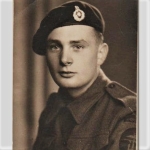
Corporal Brooks served in 48RM Commando and on the staff at the Commando Basic Training Centre. Post war member of the Commando Association.
BROWN, E.
BROWN, R.A.
Post war member of the Commando Association last known residing East Dulwich London SE22.
Sources
Commando Association Lost Legions List 2.
See Linked Content below.
CALDERWOOD, J.E.D.
CALF, R.
Sources
Commando Association Lost Legions List 3.
CAMERON, W.
Post war member of the Commando Association last known residing Werribee, Victoria, Australia.
Sources
Commando Association Lost Legion List 3.
CAMILLERI, Paul
CARPENTER, W.R.
C.B.T.C. and Commando Group. Post war member of the Commando Association from Appledore, Devon.
Sources
Additions to Obituaries in Commando Association newsletter 92 (1991).
CHALMERS, J.W.
Sources
Commando Association Lost Legions List 3.
CHANTLER, Arthur James
Source: Obituaries in Commando Association newsletter 118.
CHAPLIN, C.F.
Former Lance Sergeant C. F. Chaplin of the Commando Basic Training Centre (C.B.T.C.), died in 1956. [Source: Commando Association newsletter 23].
CLARKE, D.C.
Post war member of the Commando Association last known residing Aston, Birmingham.
Sources
Commando Association Lost Legions List 3.
CLARKE, D.H.W.
Also served at the Commando Cliff Assault Centre RM post war. Member of the Commando Association last known residing Runcorn, Cheshire.
Sources
Commando Association Lost Legion List 3.
List of RM Commandos provided by RY (former CA Sec and CBF).
CLARKE, R.
Post war member of the Commando Association last known residing Newport, Monmouthshire.
Sources
Commando Association Lost Legions List 3.
CLOVIS, John Albert
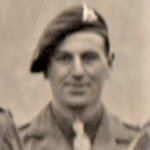
COCKCRAFT, William Gordon La Trobe
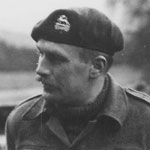
COOK, Herbert
COOMBES, F.W.
Post war member of the Commando Association last known residing Lochside, Ayr.
Sources
Commando Association Lost Legion List 3.
CORBETT, D.R.
Post war member of the Commando Association.
Sources
Commando Association Lost Legion List 3.
COTTON MINCHIN, Douglas James Maurice
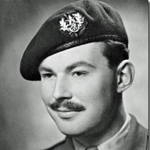
COURT, Edward George Bertram
CROWTHER, Walter Ernest Jim
CUNNINGHAM, John, W.
DALLEN, Arthur Lambert
DAVEY, A.S.
Post war member of the Commando Association last known residing Ashopston, Derbyshire
Sources
Commando Association Lost Legion List 4.
DAVIDSON, R.J.
Post war member of the Commando Association last known residing Glasgow.
Sources
Commando Association Lost Legion List 4.
DAVIES, G.
Sources
Commando Association Lost Legion List 4.
DE JONGHE, Arthur Jules Charles Baudoin
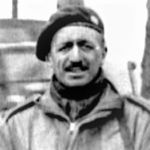
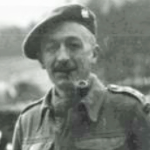
DENTON, Harry
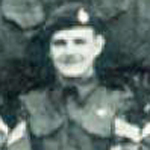
DICKS, George
DOBBS, William Horace
DODDS, R.G.
Post war member of the Commando Association last known residing Wallsend-on-Tyne.
Sources
Commando Association Lost Legion List 4.
DOOLEY, Arthur
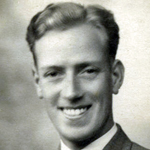
DOUGLAS, George Valentine
DOYLE, James, B.
DRANSFIELD, D.F.
Post war member of the Commando Association last known residing Wallasey, Cheshire.
Sources
Commando Association Lost Legion List 4.
DREW, Norman
DRYSDALE, Kenneth J.H.
Private Kenneth Drysdale drowned at Mucomir, Gairlochy, whilst serving at the Commando Basic Training Centre, Achnacarry. Son of Andrew Sproat Drysdale and Maggie Drysdale, of Wigtown; husband of Eileen Doris Drysdale, of Wigtown.
DUNNING, James Edwin
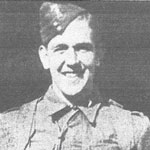
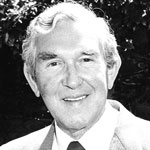
EASTON, Norman Kidston
EVANS, E.
Post war member of the Commando Association last known residing Norris Green, Liverpool.
Sources
Commando Association Lost Legion List 4.
EVANS, Frank
EVISON, Leslie John
The death of Sergeant Leslie 'Jack' Evison of Peterborough, Cambs., was announced in Commando Association newsletter 112 issued March 2001. He served at the Commando Basic Training Centre.
FAIRWEATHER, Peter, F.
FALLOWS, T.A.
FARRELL, William Henry
FIELDS, J.
Post war member of the Commando Association last known residing Clapham, London.
Sources
Commando Association Lost Legion List 4.
FLETCHER, Colin Evan Boulton
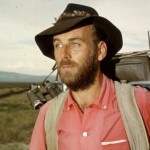
FREEMAN, Vallance Geoffrey Allen
FRICKLETON, Alex
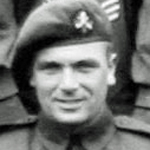
FROST, Sidney Edward
GAGE, Tony
GARRAWAY, John Harry
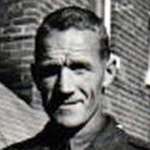
GARRETT, Albert Charles
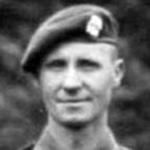
GAY, William, G.
GIBSON, Eric Hookway
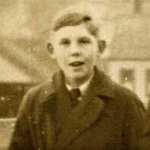
GILCHRIST, Donald Johnston

GOMM, Arthur George
Sergeant Arthur Gomm died from multiple injuries sustained as a result of the premature explosion of a high explosive demolition charge at the Commando Basic Training Centre, Achnacarry. He had previously served in France from 7 August 1944.
GOODRUM, Ronald
Post war member of the Commando Association from Blyth, Northumberland.
Sources
Obituaries in Commando Association newsletter 101 (1995).
GRAY, Edward James
GRIMWOOD, Kenneth Reeve
HAILSTONE, Harry
Also served at the Commando Mountain Warfare Centre. Post war member of the Commando Association from St Ives, Cornwall.
Sources
Obituaries in Commando Association newsletter 120.
HANSEN, Watson Victor
HARDEY, Ronald Graham Kennell
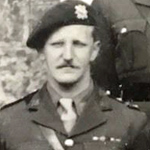
-
Sources
HARE, Owen Stewart
HARRISON, George Gemmell
HAWKINS, J.F.
Sources
Commando Association Lost Legions List 6.
HAYDON, Alan Albert
8 November 1941 posted from 34th Signal Training Regiment, RA, to Commando Depot.
HENDERSON, Reginald William
HEWLETT, Sidney
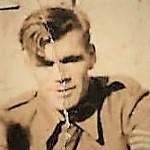
HOCTEL, Lamont Durward
HOLDSWORTH, Jack
HOOD, A.B.
Also served at the Commando Mountain Warfare Training Centre. Post war member of the Commando Association from Glasgow.
Source
Commando Association Lost Legions List 6.
List of RM Commandos provided by RY (former CA sec and CBF).
HORNE, A.
Post war member of the Commando Association last known residing Dundee.
HUGHES, William Nichol
HUGO, Terence James
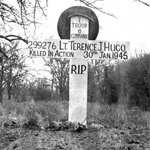
HUNTER, Jack, F.
Commando Association Lost Legions List 6.
HURST, Arthur
ION, Derek Thomas
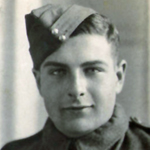
IRONSIDE, A.
Post war member of the Commando Association last known residing MacDuff, Banffshire.
Sources
Commando Association Lost Legions List 6.
IRVINE, James Feinister
IZAT, J.
Post war member of the Commando Association last known residing Rutherglen.
Sources
Commando Association Lost Legions List 6.
JACKSON, Colin
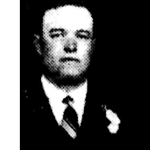
- 20 September 1938 joined the Police Service.
- 1939 single and a Police Constable residing at 191 Shelley Road, Preston.
JAMES, W.
Commando Association Lost Legion List 7.
JARRATT, F.
JEFFERIES, E.J.
Member of the Commando Association last known residing Blackwood, Monmouthshire.
Sources
Commando Association Lost Legion List 7.
Named on the Nominal Roll in Linked Content below.
JOHNSON, Herbert
JOHNSTON, J.
[Source: Commando Association Lost Legion 11].
KAYE, John
KEMP, J.
Post war member of the Commando Association last known residing Aberdeen.
Sources
Commando Association Lost Legion List 7.
KOMROWER, Arthur George
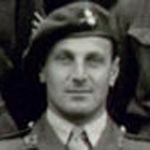
LAWRENCE, G.
Post war member of the Commando Association last known residing Harlesden, London.
Sources
Commando Association Lost Legion List 7.
LEES, Archibald
LEES, Brian
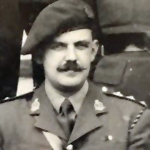
LEGGE, C.H.
Post war member of the Commando Association last known residing North Shields.
Sources
Commando Association Lost Legion List 7.
LEWIS, N.B.
Post war member of the Commando Association last known residing St. Ives, Cornwall.
Sources
Commando Association Lost Legion List 7.
LIDBETTER, Arthur Percy James
LINNEY, G.H.
Post war member of the Commando Association last known residing Johore, Malaysia.
Sources
Commando Association Lost Legion List 7.
LYONS, Frank
MACNAB, C.
Post war member of the Commando Association last known residing Stirling, Scotland.
Sources
Commando Association Lost Legion List 8.
MAGENNIS, William
MANCLARK, W.
Post war member of the Commando Association last known residing Dunfermline, Fife.
Sources
Commando Association Lost Legion List 8.
MASON, G.
Post war member of the Commando Association last known residing Pendleton, Salford, Lancashire.
Sources
Commando Association Lost Legion List 8.
MATSON, A.
Post war member of the Commando Association last known residing Nelson, Lancashire.
Sources
Commando Association Lost Legion List 8.
MCCARTHY, Patrick
MCCARTHY, Peter Francis
MCGHEE, N.F.
MCINTOSH, W
Post war member of the Commando Association last known residing Kirkcaldy, Fife.
Sources
Commando Association Lost Legion List 8.
Names in Linked Content below.
MCKENZIE, P.
Post war member of the Commando Association last known residing Tain, Ross-shire.
Sources
Commando Association Lost Legion List 8.
Names in Linked Content below.
MCKINNON, A.
MCLEAN, George
MCNICKLE, Albert Charles Stephen
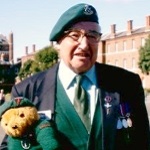
MILBURN, John
MILES, J.K.
MILNE, Alan John Mitchell
MORGAN, B.
MORGAN, Timothy Dennis
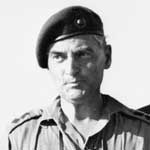
MORGAN, William Allun
Sergeant William Morgan received the Queen's Commendation for Brave Conduct for courage and great presence of mind in averting a serious accident during a live grenade training session on 15 January 1982.
Sources
London Gazette 49020, page 7885.
MURCUTT, Frederick George Halls
MURDOCH, R.J.
Post war member of the Commando Association last known residing Glasgow.
Sources
Commando Association Lost Legion List 9.
Names in Linked Content below.
MURPHY, Dennis Eric
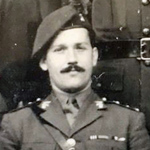
Dennis Murphy was serving as a Guardsman in the 1st Bn of the Irish Guards in 1938 when he was awarded the Military Medal for his " conspicuous gallantry during an engagement with an armed band in the vicinity of Deir Bejjala o the 18th August 1938", Recommended by the Officer Commanding British
MURRAY, Douglas Russell
MYERS, John

NEALE, Arthur
NEWLAND, W.
April 1945 - (Major) RM Holding Commando.
NIELD, John
Post war member of the Commando Association.
Sources
Obituaries in Commando Association newsletter 119.
NISBET, C.
Post war member of the Commando Association last known residing Largs, Ayrshire.
Sources
Commando Association Lost Legion List 9.
Names in Linked Content below.
NOTTINGHAM, D.W.
Post war member of the Commando Association last known residing Leicester.
Sources
Commando Association Lost Legion List 9.
PAIN, Nigel
PANTALL, Richard William White
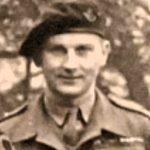
PARKINSON-CUMINE, Ralph Nicholas
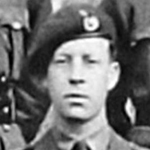
Captain Ralph Parkinson-Cumine MC, 'B' troop, was reported missing presumed killed during operations in Korea. His Commando were engaged in operations with US Forces as part of Taskforce Drysdale, named after their Commanding Officer Lieutenant Colonel Douglas B.
PARR, Edward William
PASK, Douglas
PEACOCK, M.
Post war member of the Commando Association last known residing Glasgow.
Sources
Commando Association Lost Legion List 9.
PEARSON, George
PERRY, Frank Herbert
Post war member of the Commando Association residing Liverpool.
Sources
Obituaries in Commando Association newsletter 49 (1969).
PHILLIPS, Albert Henry
PORTER, G.
Post war member of the Commando Association last known residing Glasgow.
Sources
Commando Association Lost Legion List 9.
Names in Linked Content below.
PRICE, Martin
PROCTOR, John David
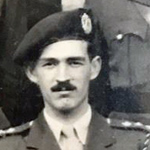
PUGH, Joseph Arthur
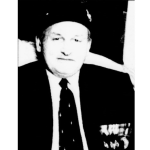
QUICK, Arnold Bertram
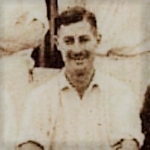
- 1936 - 1952 played cricket for Essex County Cricket Club.
RAFFERTY, E.
Post war member of the Commando Association last known residing Glasgow.
Sources
Commando Association Lost Legion List 9.
RICHARDSON, Sydney
ROBERTS, D.A.E.
ROBERTSON, A.M.
ROWE, Edward George
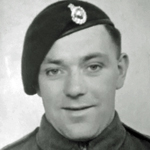
RUSCHKEWICZ, James R.
- 33068148 Ranger Aaron M. Salkin, 'C' Company, was severely injured.
SAVILL, Gerald Peter
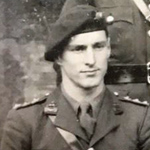
SAVILLE, A.M.
Post war member of the Commando Association last known residing Colwick, Nottingham.
Sources
Commando Association Lost Legion List 10.
SAWKINS, Thomas James
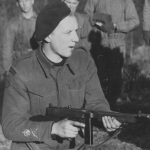
07.02.1943 Involved in the training of the American Rangers at the Commando Depot.
10.03.1945 commissioned Second Lieutenant, East Surrey Regiment.
SCULLION, James
SEABROOK, Leonard Sidney
Post war member of the Commando Association from Fortis Green, London N2.
Sources
Obituaries in Commando Association newsletter 78 (1984).
SHARPLES, R.L.
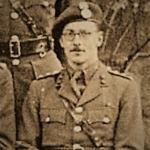
In 1944 Captain Sharples was the Administration Officer at the Commando Basic Training Centre (CBTC), Achnacarry. Post war Solicitor based Fleetwood, Lancashire and member of the Commando Association
SHAW, G.B.
Post war member of the Commando Association last known residing Sheffield.
Sources
Commando Association Lost Legion List 10.
SHEPPARD, J.O.
Post war member of the Commando Association last known residing Streatham, London.
Sources
Commando Association Lost Legion List 10.
SIMCOCK, J.B.
Post war member of the Commando Association last known residing Liverpool.
Sources
Commando Association Lost Legion List 10.
SIMPSON, John Denys Stenhouse
SMITH, Andrew Henry
SMITH, Francis Thomas
SMITH, Leonard John Charles
Discharged from military service 12 January 1946. Post war member of the Commando Association last known residing Kingsbury, London NW9.
Commando Association Lost Legion List 10.
Army Medal Application Card.
SMITH, Roy
SPOWART, R.
Post war member of the Commando Association last known residing Liverpool.
Sources
Commando Association Lost Legion List 10.
STABLES, J.
Post war member of the Commando Association last known residing Huntly, Aberdeenshire
Sources
Commando Association Lost Legion List 10.
STAINTON, Leonard James
Source: Obituaries in Commando Association newsletter 116 (2003).
STEVEN, Campbell Rodger
Source: Obituaries in Commando Association newsletter 116 (2003).
STEWARD, A.H.
STOCKBRIDGE, William
SUTTLING, Leonard Victor
SWEENEY, Charles Henry
TEWKESBURY, Edward Frank
THOMAS, James
THOMAS, Thomas
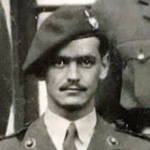
THOMPSON, George Howarth
Post war member of the Commando Association residing Burnley, Lancashire.
Sources
Obituaries in Commando Association newsletter 92 (1991).
THOMPSON, J.
THOMSON, Niall, G.
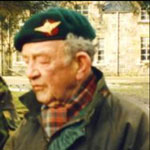
TRAVERSE-HEALY, Thomas Hector
TURNER, F.
[Source: Commando Association Lost Legion 11].
TURNER, Frederick William Morgan
TURNEY, William James
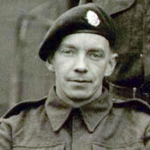
William James Turney enlisted as a Private into the 6th Beds and Herts Bn., TA on the 29th January 1940 and was quickly promoted Acting Lance Corporal. He volunteered for the Independent Companies (Ind. Coy.) and on the 26th April 1940 was attached to No 3 Ind. Coy.
TURTLE, J.
[Source: Commando Association Lost Legion 11].
VAREY, S.E.
[Source: Commando Association Lost Legion 11].
VAUGHAN, Charles Edward (Lt Col)
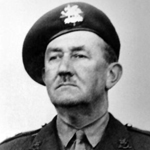
Charles Edward Vaughan, born 1893, was originally attached to No.7 Commando. The then Major Vaughan took over as Acting Second in Command of No.4 Commando on 30 June 1941 replacing Major M.G.
WALBRIDGE, Percival Norman
WALKER, R.I.
WALKER, T.
WELCH, Frederick Edward
WHITING, A.E.
[Source: Commando Association Lost Legion 11].
WILCOX, H.
WILLEY, E.
WILLIAMS, Sidney Walter
WILLIAMSON, H.
[Source: Commando Association Lost Legion 11].
WILLIAMSON, P.
[Source: Commando Association Lost Legion 11].
WILLIS-JONES, John
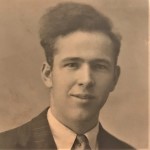
WOOLLAM, George Arthur
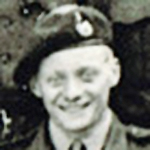
WOOLLEY, C.W.
Ask Questions / Add Information / Add Photos
Read some frequently asked questions here [FAQ's].


